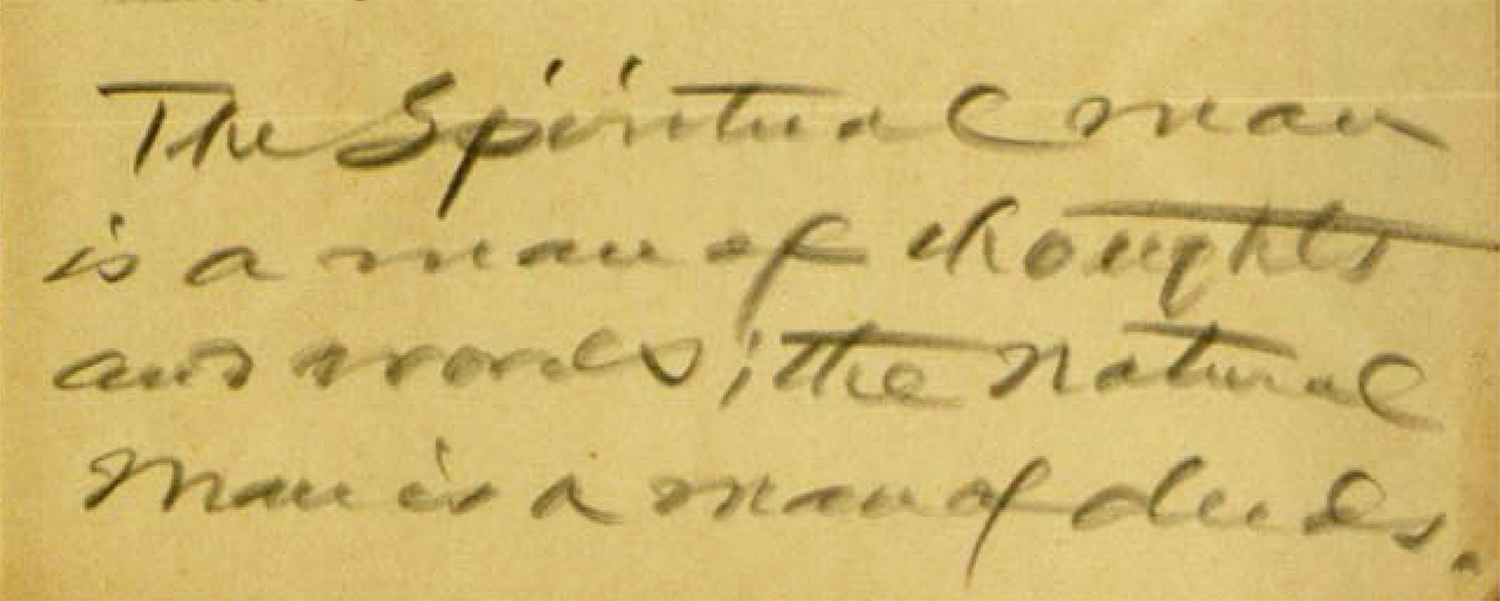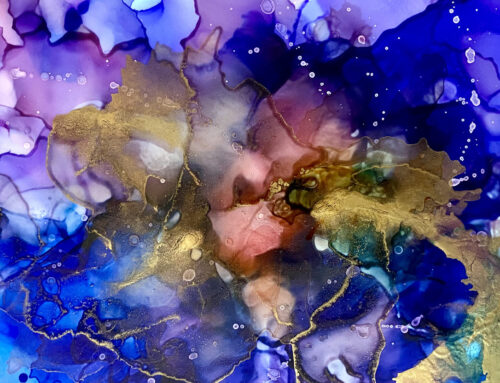It is Charles Fillmore’s birthday today, he would have been 165 years old. So I offer this essay about “the Silence.” His meditation practice was referred to as Practicing the Silence, and then there is the Silence itself, a state of consciousness. It was a gift given to us from the co-founder of Unity 120 years ago. It’s not a NEW thing, it’s a spiritual practice people have been engaged in for thousands of years in many different ways, but what do you give a man on his birthday who has everything? I think I shall give him the present of presence! I am presencing a piece of his legacy – THE SILENCE – for his birthday present.
And while I stood there I saw more than I can tell, and I understood more than I saw: for I was seeing in a sacred manner the shapes of things in the spirit, and the shape of all shapes as they must live together like one being. -Black Elk
There was a time in human history when the idea and ceremony of seeking a vision was just as important and as much a part of a life as birth and death. If we look at nature it seems as though most every life form has a sense of purpose, not consciously perhaps, but life does continue to march forward, always creating, always birthing, always evolving.
Practicing the Silence
Civilized humans on the other hand, often appear to be disconnected to purpose, or wrestle with the idea of feeling lost and wandering with little or no direction. How many times do we hear from friends or family members, “I wonder what’s mine to do?” Or, “What’s my life purpose?” It’s a time when I recognize I may be losing a conscious connection to the sacredness of the earth, the divine and its mysteries. This is where Practicing the Silence, that includes time in the Silence (the state of consciousness), begins.
I know sometimes when I feel overwhelmed by the world around me, and my inner world is chaotic, I may find myself wondering what I have to offer the world. I believe we are all created as compassionate and giving creatures – here to be a part of healing the world, to support all life and enjoy it. We are imaginative beings, and through our dreams, visions, hopes and desires we find the direction of our passions, and our work to be done. But these things are first played out within us when we invest in what Charles Fillmore referred to as Practicing the Silence, which leads to the Silence.
[bctt tweet=”In its simplest form, the Silence is just that, SILENCE. We don’t know when we are in because it is a state of consciousness we call nondual consciousness.” username=”kellyisola”]There is sometimes confusion because there is both the Practice of the Silence and a state of consciousness called the Silence. In its simplest and most practical form, Practicing the Silence (meditation) leads us to the Silence, a state of nonawareness called nondual or unitive consciousness. We don’t know when we are in the Silence, because it is a different state of consciousness from the awareness needed to be sitting here typing. This nonawareness arises during meditative practices. It is the medium in which and from which our True Nature, our Most Noble Self expresses. He believed this was paramount to a purposeful life. He believed that when we enter this state of nondual consciousness regularly, we are enriched, empowered and lifted up because ultimately they will lead us to living lives that are fulfilling and peaceful.
The irony of “being in the Silence” is that you don’t know you’ve been in it until after you have come out of the Silence. You can only explain it or learn from it AFTER being in the consciousness of the Silence. Most of us have experienced it without necessarily realizing it. Roughly, it’s those times in our meditation practice where we have lost all connection to time and space.
Charles spoke of Practicing the Silence, and the Silence, in almost every lesson he taught, as well as every written piece of work. It was the foundation of his life. Investing time in the Silence leads us to our own answers of healing, abundance, as well as the discovery of purpose in life – all of which are made manifest in the outer world, only if we invest in Practicing the Silence.
“…we find that as we look into the history of the human family visions and dreams have always been part of their experience. They must, therefore, have a meaning, they must have a place.” Charles Fillmore, 1924
The Silence, Dreams and Visions
Charles Fillmore was born in 1854, and raised on the Chippewa Indian Reservation, just outside St. Cloud, Minnesota. He lived amongst hunters, trappers, travelers and men of all types specifically Chippewa and Lakota, who daily passed by his cabin. While there is no direct evidence that Charles Fillmore was heavily influenced by the environment of his youth or not, it is difficult to ignore the inherent possibilities he likely would have spent a great deal of time in their lodges and tipis, roaming freely with the children. He would have seen many types of ceremonies, including ones performed by the shaman during different seasons, occasions, and times of the day. He would have listened to the oral tradition of storytelling, heard public prayers and witnessed spiritual healing, herbal medicine practices, sweats, and vision quests.
Through his interactions and everyday life he could have developed the beginnings of his deep understanding and appreciation for the visionary and mystical experience. I think he was born to search for the meaning of life, and knew he had to find the meaning within his own soul. He was born curious and aspired to inquire into Truth everywhere.
In time he began having very vivid and lifelike dreams in his sleep time; these dreams finally convinced him that Spirit was guiding him and the visions needed to be explored in more detail. As his granddaughter, Rosemary Fillmore Rhea, so eloquently said it, “The unknown was always exciting to Charles Fillmore. He had the spirit of a true adventurer, and he was constantly exploring new dimensions of living and thinking.” So he ventured into learning everything he needed to know by paying attention to his dreams and meditations.
Charles Fillmore understood the importance and purpose of visions and dreams, and taught that their meanings are found by Practicing the Silence, which would lead to being “in the Silence” and ultimately to our True Nature. Because of the value Charles Fillmore gave to being in the Silence, he took his dream information into his meditations to discern the information. He developed some specific practices such as breathing, posture, and focusing the mind as tools for entering into the Silence. These practices allowed him to receive from his Higher Self, to express his True Nature. After he came out of the Silence, imaginative and practical ideas, and answers to his questions were revealed to his conscious mind. He then presented the information he received in his lessons and lectures as spiritual truth.
[bctt tweet=”The symbols and images we receive in dreams and in silent meditations must be interpreted two ways. First mentally, and second, discover what the images have to do in relation to us in the world?” username=”kellyisola”]While he was committed to understanding these visions, what was more important was having the power to direct them, to help in the changes and creation of circumstances in our lives. He wanted us to become one with the image or thought so that we might manifest it in our material world. However, Fillmore believed the symbols and images we receive in dreams and in silent meditations must be interpreted mentally, and we need to discover how the vision is the touch point for the outer meaning of the dreams and visions. Ask ourselves, “What do the images have to do in relation to us in the world?”
His years of this practice demonstrated for him that all power is born out of the Silence. He said, “All men who have moved the world to better things have received their inspiration from within and have always looked to it for instruction… Principle is the silent voice that speaks into visibility all the life there is.”
Building on the Silence
From investing time in the Silence we discover gifts that we can bring to our whole community. Introspective and silent rituals help us relinquish an old life, old thoughts and move into the unknown, and return to the world reborn, revitalized and more in the Christ mind. When we enter the Silence we return to our families and society powerfully moved by having been one with the healing power of nature and one with our own living spirit.
We seek our Higher Self or that still small voice, to find balance in our lives and to answer the questions about our path in life. When we become aware of an innate sense of needing to remove ourselves from man-made things, we know it is our time to find a sacred place, a place away from man-made structures of concrete and steel, removed from the industrial noises of cars and machines. It is a time to find a place closer to the natural world of living, growing things, connected to the wind’s whisper over water and to the rush of waves breaking on the shore, to be in the Silence.
The visions come to us directly, without books, churches, or religious teachers. They are for us, and some are to be shared with the world for they all emanate from a vast, universal resource of spiritual energy. As a result, each individual on quest or in the Silence becomes, in some small measure, his or her own holy guide, because of the guidance received.
Whatever the approach, whether you are Buddha, Jesus, Black Elk, or Charles Fillmore, the process is unique, solitary and clearly universal in nature. In Practicing the Silence, an individual stands before all of creation as their true self, claiming weaknesses and strengths, experiencing our life as fully human and fully divine. We come away feeling more certain of our abilities because we have seen our own self-imposed limitations and found answers – inspired and awakened by investing time in the Silence.
Bible: I think sometimes we would get along a little faster in our understanding of the Absolute Truth if we quit this constant quotation of Scripture. 1914 lecture on Bible interpretation
We Use God: God only does what man says he shall do. God is our servant. Did you ever think of that, that this wonderful Spirit of God, out of which everything is made is here at all times, is always present with us and we are using that God. Unity Conference and Healing Revival, 1923. If you want to contemporize this, substitute PRINCIPLE where it says GOD.
Use of Power: There is but one power. We use it as we will. If we send it out by our thought and word in hate, it destroys, but if we send it out in love, it builds. There are not two powers, but two ways of using power. Education Ministry File, Correspondence School file, Lesson 2
Third Person, Second Person, First Person: A lady told me yesterday that she attended a Bible study class in Chicago, and she was asked to give a prayer, and she talked to God and called God “you,” and after the class the teacher went to her and said, “You committed an error in your familiarly with God: you haven’t reverence enough. You should never say ‘You’ to God.” There is separation, in Bible teachers, between man and God. God is the Spirit of God within you. Don’t speak to Him as existing in the third person. It may be in our present development that we shall speak to Him in the second person, but the time is coming when we shall speak of Him in the first person, and then we can say with Jesus, “He that has seen me has seen the Father.” We speak of God in the third person and then in the second person, but eventually we shall displace all separation, and we shall say, “This is the Father, what you see is God!” “He who has seen me has seen the Father. We are here this morning to fulfill this law of divine unity, to unify ourselves with this Spirit of love within everyone of us. Human Love and Divine Love, unpublished talk 1930








It’s so beautiful to have recieved it at this point in my life…♥️☘?